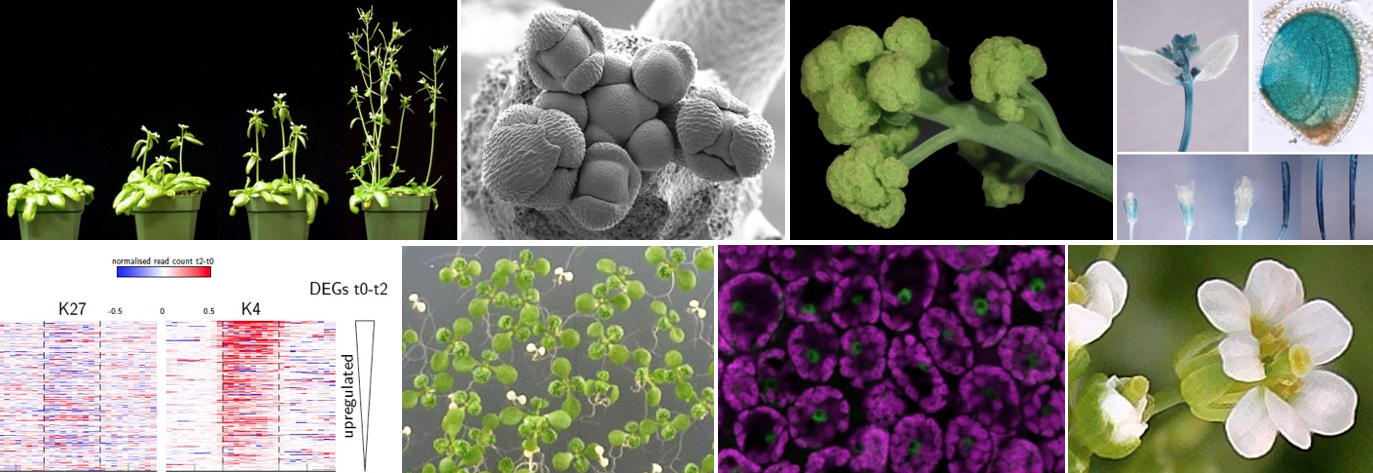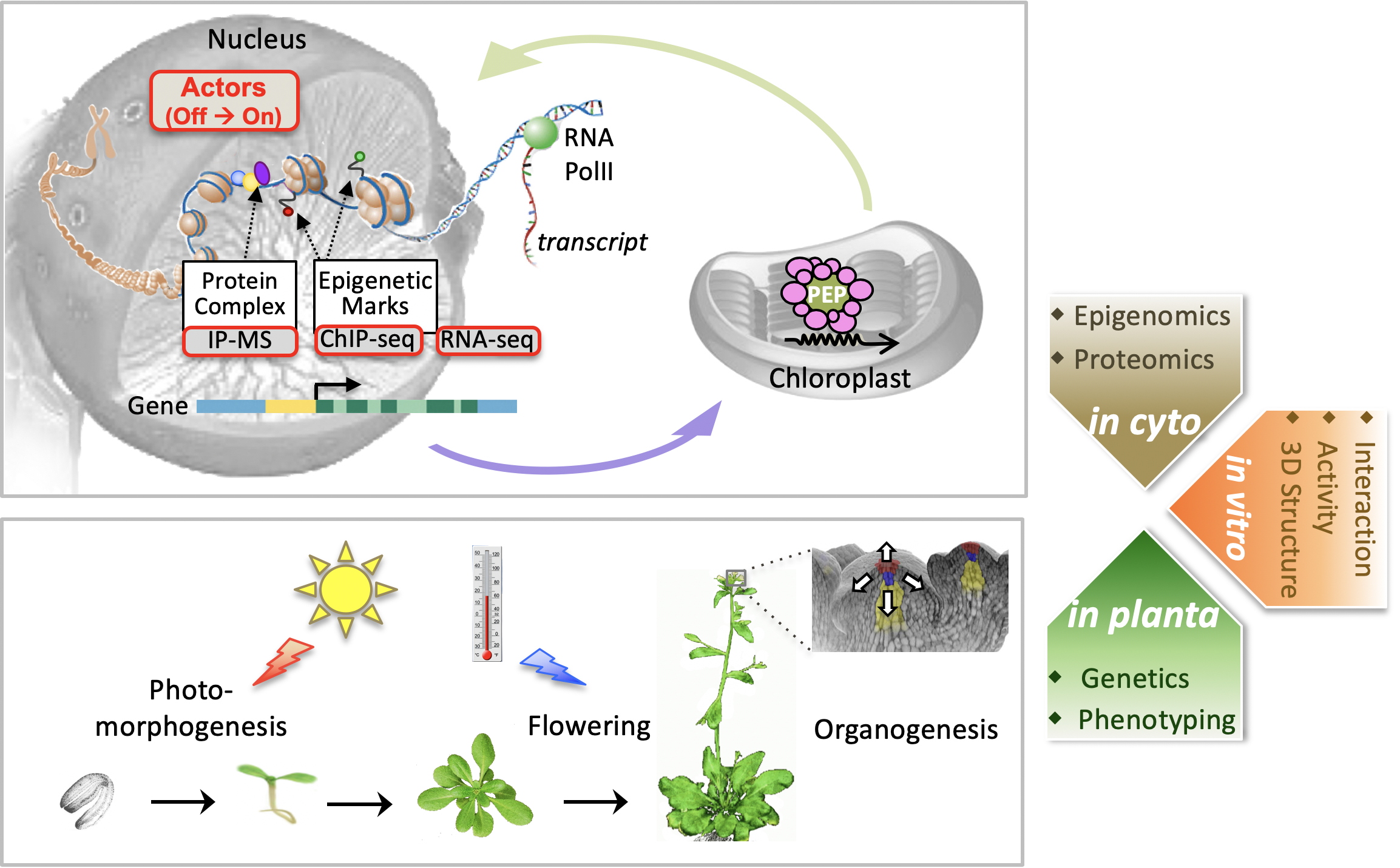
How do higher plants deploy flexible and adjustable developmental programs?
Our research work is dedicated to answer this question by studying the
functions of regulators acting on cell fates, both in relation with cues that are endogenous (core developmental programs) or exogenous to the plant (switches induced by environmental conditions). The functions we are interested in operate at the levels of
chromatin state switches and
nucleus-chloroplast communication, and
all contribute to differential usage of the genome via gene expression control.
Our developmental models, both characterized by drastic gene expression changes, are in Arabidopsis: the
organogenesis at the shoot apex, which is governed by major nuclear reprograming events that determine stem cell fates; and the
skoto- to photo-morphogenesis switch in the young seedling, involving nucleus-chloroplast communications.
We use an
integrative approach connecting developmental processes, transcriptomes/epigenomes and molecular/atomic properties of individual protein regulators and complexes. For this, we combine our expertise in plant molecular genetics and chromatin biology with local skills and infrastructures for biochemistry, biophysics and structural biology.

